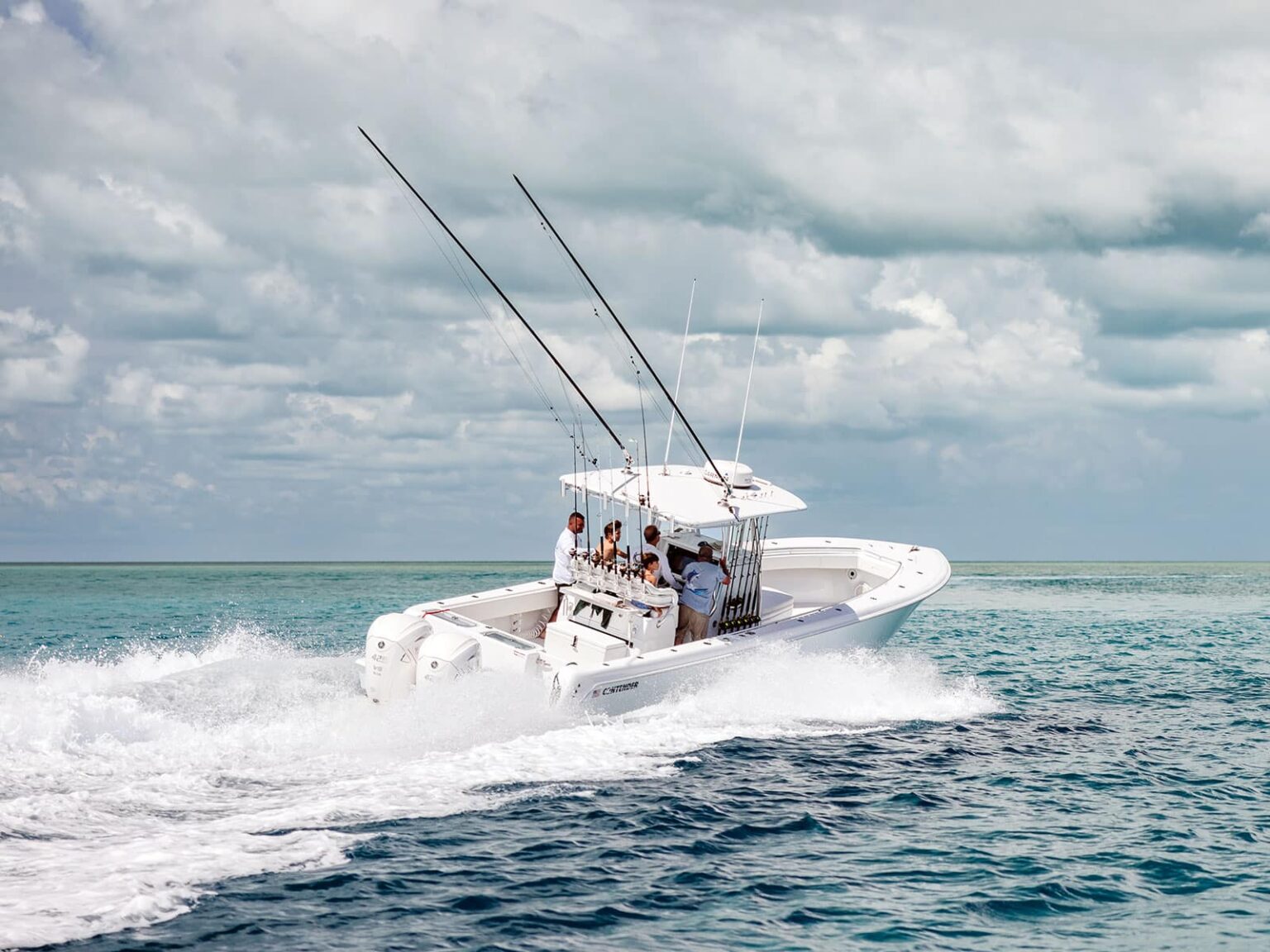Now is an excellent time to explore new or pre-owned saltwater fishing boats. After you’ve made your selections, arrange for a sea trial.
Courtesy of the Fort Lauderdale International Boat Show
The Fort Lauderdale International Boat Show is currently in progress. You will find numerous new saltwater fishing boats that are highly appealing to dedicated anglers. However, before committing to purchase that flashy new fishing vessel, take the time to conduct a comprehensive sea trial. This is essential for understanding how the boat performs in real-world sea conditions.
Any boat dealer or factory representative should readily agree to arrange an on-water demonstration for a serious buyer. Instead of just a quick jaunt outside the inlet during the hectic boat show, book a time after the event when you can thoroughly test the boat and spend a few hours aboard.
There’s no reason not to follow these same guidelines when purchasing a used boat. At the dock, examine all the boat’s systems, including livewell configurations. Make a checklist of the features and comforts you desire, ensuring you mark them off as you review the boat. After leaving the dock, request the dealer or owner to let you take the wheel; this will provide the best understanding of the boat’s handling. Here are ten critical factors to consider while conducting a sea trial for a boat you are thinking about purchasing:
Fishing Boat Helm Visibility and Comfort
A boater should feel at ease at the helm, whether standing, seated, or leaning against a post.
Evaluate your visibility from the helm at all times—whether idling, underway, or accelerating. If the boat rides too high in the bow or if the dashboard is too elevated, it may pose a safety concern and limits your sight for spotting fish ahead. If visibility is inadequate from the helm, it’s best to consider a different boat. Comfort at the helm is also essential, regardless of your position.
A Boat’s Acceleration
Ensure the boat rises to plane without difficulty when you push the throttles. Struggling to climb could indicate insufficient power, an inappropriate propeller choice, or improper setup (like having the outboards at an incorrect transom height). In any event, ask the boat representative to address the issue, and then arrange for another sea trial.
Minimum Planing Speed of a Boat
It is crucial to understand how slowly a boat can maintain a plane. This matters significantly when navigating rough waters and needing to reduce speed for comfort without losing planing for better fuel efficiency. Adjust the engine trim downwards and deploy the trim tabs or interceptors to ascertain the minimum planing speed, ideally aiming for speeds between 15 and 20 mph. If the boat won’t plane at these speeds, consider exploring other options.
Fishing Boat Fuel Efficiency
As boats increase in size, the difference in fuel economy tends to decrease between various models.
Courtesy of Contender Boats
Test the boat at different RPMs to find the optimal miles per gallon. This is usually displayed on the engine’s digital readout. For outboard-powered vessels, excellent fuel efficiency is generally at around 3,500 to 4,000 RPM. This provides insight into future fuel expenses and, importantly, the fishing range based on the boat’s fuel storage.
Smooth Ride and Seakeeping When Boating
Comfort and seakeeping are essential when navigating choppy seas. You want a boat that efficiently slices through rough water without taking excessive spray over the bow or delivering a jarring experience. If the boat pounds heavily or the nose tends to dive into waves, try adjusting the speed, engine trim, or tabs to enhance comfort. While some of these issues may be corrected with adept steering, if they persist, it would be wise to look at different boats.
A Fishing Boat’s Stability
Assess whether the hull rolls uncomfortably at rest or while moving. Position the boat abeam of the seas and reduce to trolling speed—how does the side-to-side movement feel? Some rolling is expected, but it should not be extreme. If the roll is tolerable, you have a stable platform for fishing. If not, consider other boats or think about adding a Seakeeper gyro-stabilizer to mitigate the roll.
Boat Handling
If possible, try testing a boat in rough conditions. How well does it navigate waves? Is it a wet experience?
Courtesy of Boston Whaler
Most new saltwater fishing boats have decent handling, but if you’re looking at an older model, especially early stepped-hull designs, ensure it corners effectively at speed. It should navigate smoothly with minimal slipping or catching during turns. As mentioned, confirm that the bow doesn’t dive into waves while underway and check low-speed handling for easy docking and responsive movement in reverse.
Reserve Power When Boating
Ensure the boat has adequate and readily available reserve power. While cruising at mid-RPMs, you should have extra throttle available for quick acceleration in emergencies. This is crucial if you encounter an unexpected wave or a large following sea when returning through the inlet. With reserve power, a quick throttle push can get you out of danger, whereas lacking it leaves you vulnerable to the seas.
Fishing Boat Top Speed
While maximum speed isn’t always essential for saltwater fishing—except during tournaments when reaching spots quickly matters—knowing the top speed can be advantageous. It may be especially helpful if you need to escape an approaching storm while out at sea.
Keeping Dry While Boating
Observe whether spray is a concern while operating the boat, and under what sea conditions. Most boats will experience spray on the windward beam in gusty situations, but they should remain relatively dry when running down- or up-wind. If the boat experiences significant spray while going into or with the wind, it’s an issue. Conversely, if you stay dry, you’re likely testing a well-designed vessel—perhaps one you should consider purchasing.

